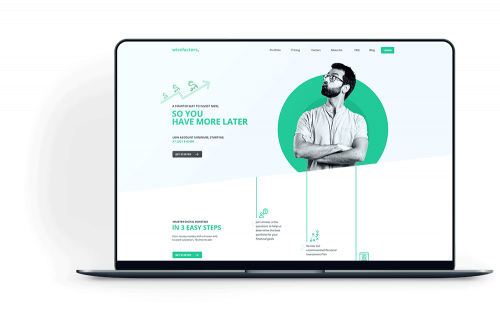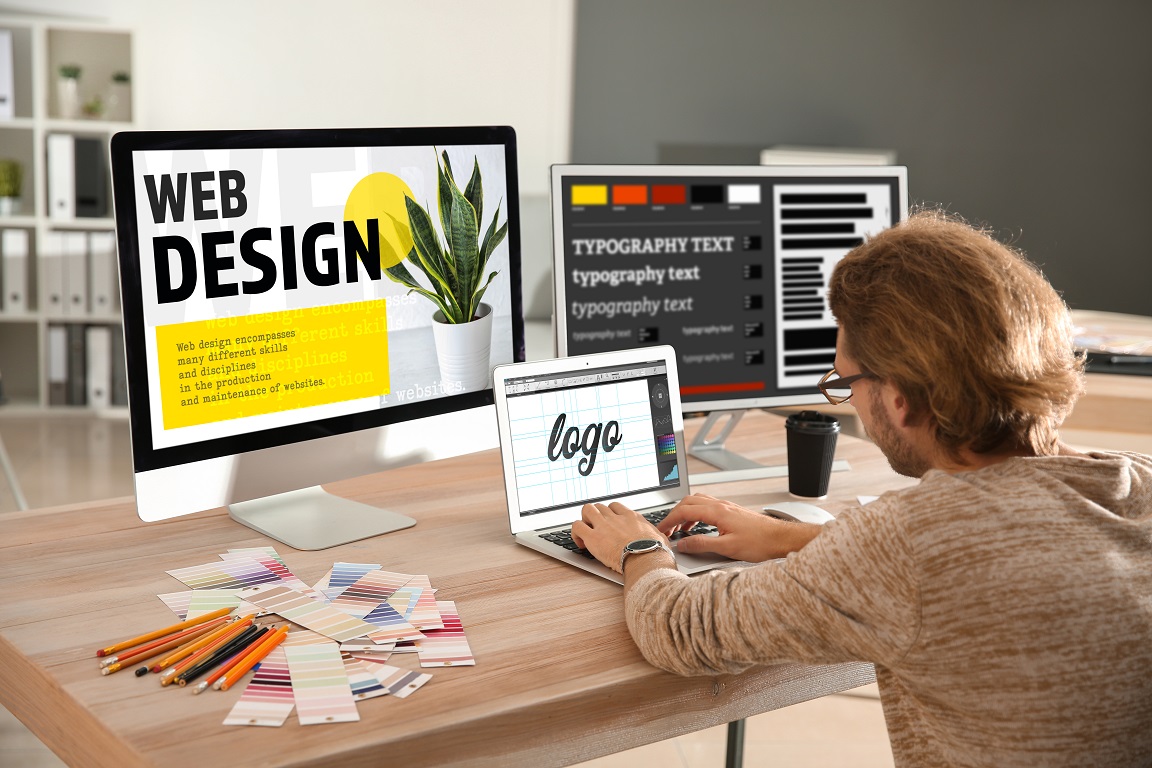Expert Website Design: The Secret to Structure Credibility Online
Expert Website Design: The Secret to Structure Credibility Online
Blog Article
Maximize Individual Experience With Ingenious Web Site Layout Solutions
In today's digital landscape, making best use of customer experience via cutting-edge web site style services is crucial for organizations seeking to engage their audience properly. By embracing user-centric layout principles, companies can produce interfaces that not only fulfill individual needs however additionally enhance total contentment. Key variables such as receptive designs, user-friendly navigation, and reliable aesthetic pecking order play a critical function in this process. Nevertheless, the integration of interactive aspects can further elevate the customer journey, prompting a reevaluation of typical style methods. What techniques might emerge when we take into consideration the developing assumptions of customers?
Recognizing User-Centric Layout

To execute user-centric design properly, it is important to carry out detailed research, consisting of customer interviews, studies, and usability screening. These research approaches provide valuable information that educates style choices, guaranteeing that the end product lines up with individual assumptions. Furthermore, creating customer personalities can help developers understand and picture with the end-users, leading the style procedure towards a lot more pertinent remedies.
Moreover, iterative design is a crucial part of user-centric methodologies. By continuously testing and refining styles based upon customer comments, designers can recognize discomfort points and locations of renovation, leading to an extra refined end product. Eventually, user-centric design is not simply a stage in the growth process yet a constant dedication to prioritizing individual requirements, leading to even more reliable and interesting electronic experiences.
Relevance of Responsive Layouts
As digital communications increasingly take place throughout a variety of tools, the significance of responsive designs can not be overemphasized. A responsive design makes certain that a web site adjusts effortlessly to various display sizes, from desktop screens to mobile phones. This adaptability is vital in today's multi-device landscape, where users expect a interesting and regular experience no matter how they access content.
The main advantage of receptive layout is boosted customer fulfillment. When an internet site is maximized for all devices, it reduces the requirement for zooming, scrolling, or horizontal navigating, which can irritate customers and lead to higher bounce prices. In addition, internet search engine like Google focus on mobile-friendly internet sites in their ranking formulas, making receptive formats important for effective search engine optimization strategies.
Furthermore, responsive designs facilitate much easier maintenance and updates. Instead of handling separate versions of a website for various tools, a solitary, fluid style can be modified, conserving time and resources. This holistic approach not just enhances efficiency but also cultivates brand name coherence throughout platforms. Eventually, spending in responsive designs is not simply a trend; it is a fundamental concept of contemporary website design that substantially enhances user experience and interaction.
Enhancing Navigating and Ease Of Access
Effective navigating and availability are pivotal elements of a well-designed internet site, substantially affecting user involvement and fulfillment. An user-friendly navigating structure permits site visitors to locate info promptly and without effort, lowering irritation and increasing the browse around this web-site probability of repeat gos to. Applying clear, descriptive tags for navigation links, in addition to a sensible power structure, can assist customers seamlessly with the website.
Availability is just as crucial, ensuring that all users, no matter their disabilities or abilities, can communicate with the website properly. This can be achieved via using proper shade contrasts, message sizes, and alt message for images, which with each other enhance the experience for visually damaged customers. Integrating key-board navigation and display visitor compatibility broadens gain access to for users with varied needs.
Regular functionality testing can offer important insights into navigation effectiveness and ease of access problems. By gathering feedback from genuine customers, designers can identify discomfort factors and make informed adjustments. Ultimately, focusing on navigating and access not just promotes inclusivity but likewise cultivates a favorable customer experience, strengthening the brand's dedication to high quality and individual treatment in a progressively digital landscape.
Utilizing Visual Pecking Order Efficiently
Visual power structure works as a guiding framework in site design, routing individuals' attention to one of the most essential elements on a page. By purposefully arranging visual parts such as shade, spacing, and typography, designers can create a clear path for users to adhere to. This framework not just enhances customer experience yet additionally improves material comprehension.
One effective way to develop aesthetic power structure is through using size and scale. Larger components normally draw in even more attention, making headings and key visuals useful source prominent. Complementing this method with contrasting shades can even more set apart primary content from additional details, guaranteeing that essential details attracts attention.
Moreover, the setup of components plays a critical duty in directing user communication. Using a grid layout can develop a cohesive circulation, while whitespace aids to separate material and decrease cognitive load - Website Design. This willful spacing permits individuals to refine info more quickly, causing boosted interaction
Finally, utilizing consistent design patterns assists reinforce aesthetic pecking order, offering customers with acquainted hints as they browse the website. By focusing on these concepts, designers can successfully make best use of individual experience, ensuring that site visitors can easily situate the info they seek.
Incorporating Interactive Aspects
The incorporation of interactive components into site layout can considerably boost user engagement and total experience. Interactive functions such as surveys, sliders, and quizzes not only mesmerize individuals yet also promote active engagement, making the surfing experience extra unforgettable. By urging individuals to communicate, sites can properly preserve focus and reduce bounce prices.
Moreover, integrating dynamic web content like animations and hover results adds an enticing layer of interactivity. These aspects can direct individuals with ease with the site, highlighting crucial information and contacts us to activity. For example, animated buttons can draw interest and enhance click-through rates.
Furthermore, customization through interactive devices such as chatbots or recommendation engines enables sites to provide to individual choices, cultivating a sense of link. This customized method not only enhances user fulfillment but additionally encourages repeat sees.
Including analytics tools to track interactions gives valuable insights right into customer actions, making it possible for continuous renovation of the interactive components. Ultimately, a well-designed interactive experience transforms an easy surfing session right into an interesting trip, bring about raised customer satisfaction and commitment. As a result, integrating interactive elements is crucial for taking full advantage of user experience in contemporary website layout.
Verdict

In today's digital landscape, making the most of individual experience via innovative web site design options is necessary for companies looking for to involve their audience efficiently. Ultimately, prioritizing navigation and ease of access not just fosters inclusivity but additionally cultivates a favorable user experience, reinforcing the brand name's dedication to top quality and user treatment in a significantly electronic landscape.

In conclusion, maximizing customer experience with cutting-edge internet site style options necessitates a dedication to user-centric principles. Website Design.
Report this page